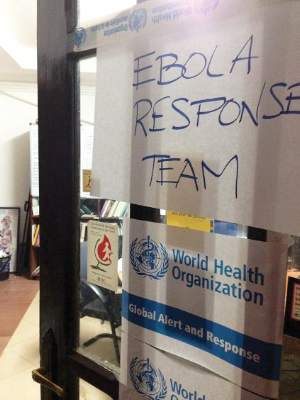The struggle to defeat Ebola virus disease continues globally, although it may not always make the headlines. To catch up on what you may have missed, here are some notable news items and journal articles published over the past few weeks that are worth a second look.
Individuals from areas of poverty were associated with high rates of transmission and spread of Ebola to other regions, according to a study in PLOS Neglected Tropical Diseases. A research team at the Yale School of Public Health analyzed the heterogeneity of Ebola incidence and transmission factors among 300 communities, categorized by socioeconomic status, within Montserrado County, Liberia, and found that infected individuals from communities of middle and low socioeconomic status were associated with 1.5 and 3.5 times as many secondary cases as those from communities of high socioeconomic status. This suggests Ebola could most effectively be prevented or contained if disease interventions were targeted to areas of extreme poverty and funding were dedicated to development projects that meet basic needs.
A recent study published online in the Journal of Virology shows a promising mechanism for attacking the Ebola virus. A team at the Texas Biomedical Research Institute used ultradeep sequencing to reveal that the spontaneous mutation frequency for Ebola virus was high and similar to that of other RNA viruses, although the Ebola virus had very limited ability to tolerate spontaneous changes in the genome. Testing the drug ribavirin in mouse and monkey models of postexposure therapy, researchers delayed the time to subject death and increased survival.
Dr. Tom Koch , a medical geographer at the University of British Columbia, Vancouver, reflects in a review essay in the International Journal of Epidemiology on what could have been done differently in the efforts to prevent the Ebola epidemic in 2014. He said the limits of patient location and travel mapping are reasons why it was difficult to contain Ebola from spreading. Maps and census data were almost nonexistent for the region in Guinea where the outbreak occurred, and aggressive quarantine programs were not quickly enacted.
A clinical team at an Ebola treatment unit in Sierra Leone has published guidelines for the treatment of children with Ebola virus disease. The aggressive approach they recommend calls for giving children fluids intravenously; treating other possible infections; feeding them highly fortified food; and greatly increasing the amount of bedside care they receive.
A rapid screening assay has been used for the first time in a standard open laboratory to identify and test promising anti-Ebola drugs. Research on new Ebola therapies has been limited by an inability to compare antiviral effectiveness, since cell model systems, treatment regimens and results are so varied that it is difficult to compare effectiveness amongst the compounds.
Researchers reported in Emerging Infectious Diseases that polymerase chain reaction–based testing for Plasmodium spp. parasitemia can be implemented easily and safely in laboratories performing Ebola virus disease diagnostics to assist with case-patient management during EVD outbreaks in malaria-endemic areas.
A researcher team at Vanderbilt University Medical Center, Nashville, Tenn., and the University of Texas Medical Branch in Galveston reported in the journal Cell that they have isolated human monoclonal antibodies from Ebola survivors that can neutralize multiple species of the virus. Investigators said the results provide a “roadmap to develop a single antibody-based treatment.”
In a letter to the editor of Emerging Infectious Diseases, clinicians who worked during the Ebola virus disease outbreak in West Africa recommend that Ebola virus–positive women stop breastfeeding immediately and that breastfeeding not be resumed until two negative reverse transcription polymerase chain reaction tests of the breast milk have been confirmed.
A report in MMWR describes the design and implementation of the Ebola active monitoring program established by the New York City Department of Health and Mental Hygiene (DOHMH) during its first 6 months (October 2014-April 2015) of operation.
On Twitter @richpizzi






